#Folios
Text









compiled by Sultan Murad III
Albums of Murad III; Persian art
1570-90
397 notes
·
View notes
Text


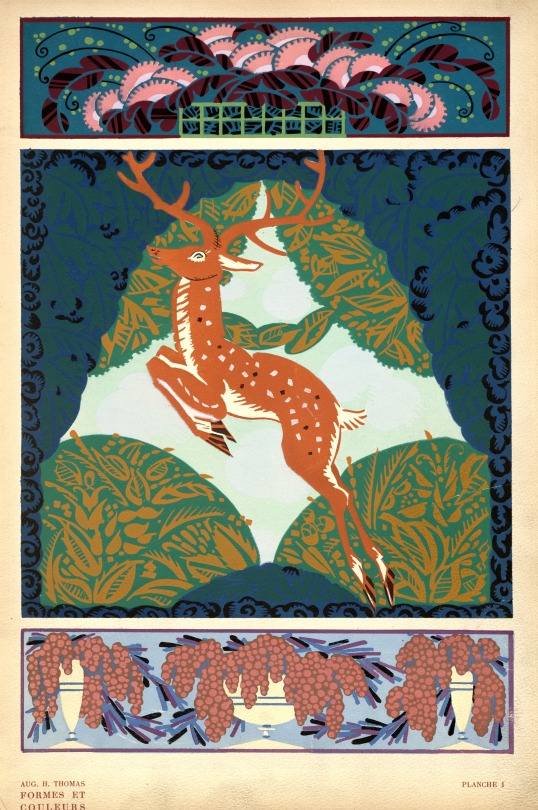
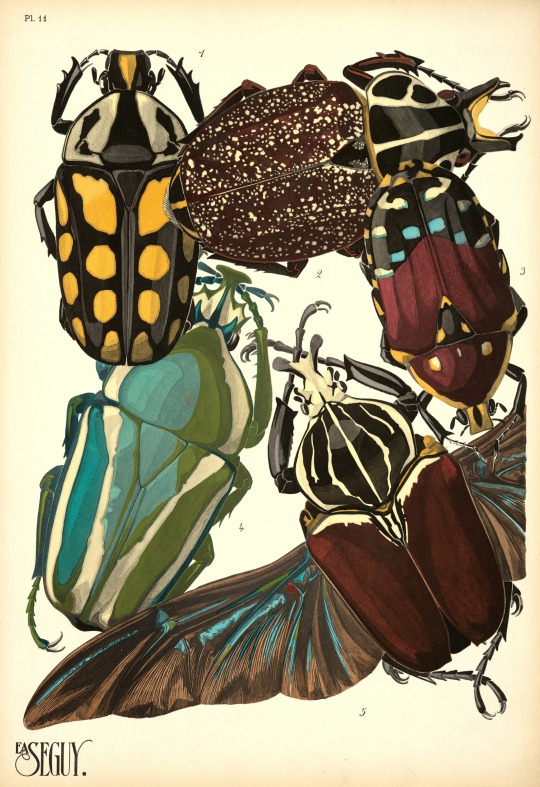





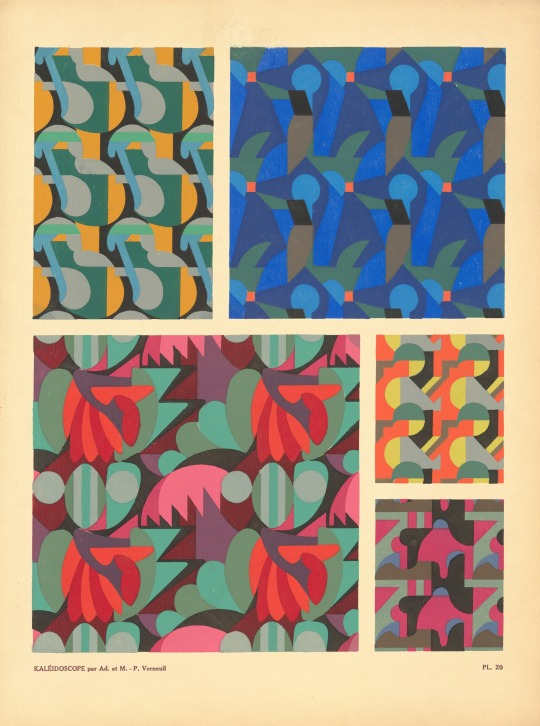
Sneak Peek! Curating a Rare Art Book Exhibit
Special Collections has hired two curators, Heather Carroll and Maya Powell, to curate an exhibit (opening this fall!) highlighting the library's rare art book collection. The Art Book Collection includes over 3,500 books featuring all art forms from around the world, spanning all eras. Most of the books in this collection were produced between 1850 and 1950 and are in the folio format--loose leaves, or pages, tied together in a portfolio. Many have been carefully hand-printed, stenciled or hand-colored.
Here's a peek at some of the treasures they've found in the vaults, many of which will be included in the exhibit.
Visit Cargill Gallery at Minneapolis Central Library from October 4 to November 29, 2023 to see Storied Leaves: Unveiling the Library's Rare Art Book Collection.
96 notes
·
View notes
Text
I made a commonplace book containing my favorite quotes discovered in 2022, using the inkvent inks. The only thing to be done is to finish looking up all the attributions and calligraph them, then I can start binding it!





#calligraphy#textualis quadrata#commonplace book#quotes#quoteoftheday#inkvent#diamine inkvent 2022#folios#brainfogbindery
17 notes
·
View notes
Text


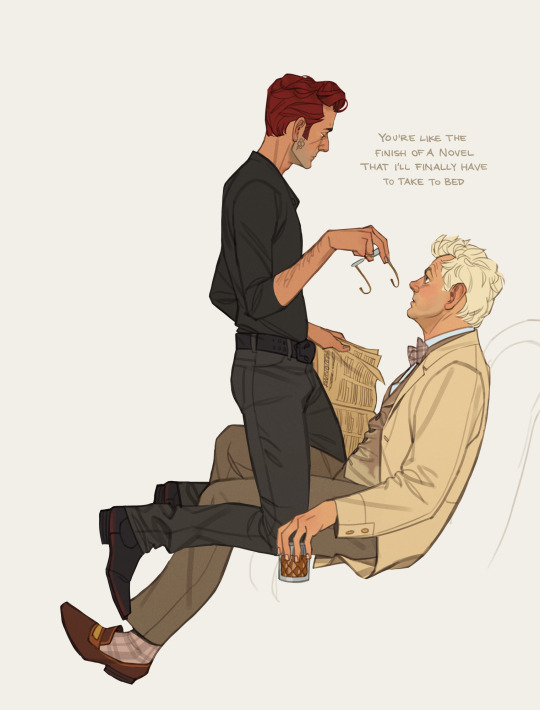


I have a feeling that beneath the little halo on your noble head
There lies a thought or two the devil might be interested to know
You're like the finish of a novel that I'll finally have to take to bed
You fascinate me so
You Fascinate Me So, Blossom Dearie
#good omens#gomens#good omens s2#aziraphale#crowley#ineffable husbands#my art#made with stolen time over the course of two extremely busy months but I'm so glad its done#Aziraphale's reading a first folio obviously#cones of dunshire voice: it's about the DETAILS#extremely excited to introduce everyone to this song about DEEPLY YEARNING for someone who annoys the hell out of you#its a banger
81K notes
·
View notes
Text
The Four Shakespeare Folios, 1623–2023: An excerpt

The word folio appears only once in Shakespeare’s plays. In the final lines of the first act of Love’s Labour’s Lost, a comedy, Don Adriano de Armado invokes the instruments of his literary art: “Devise wit, write pen, for I am for whole volumes in folio.” The reference is not a flattering one. Armado is a braggart, enamored of his own stilted way of speaking, and his oath to fill folios with the strained devising of his wit is not one we hope he keeps. The irony is that a play concerned with literary fame—that elusive object that can “make us heirs of all eternity,” according to the King (1.1.7)—puts folio, the word perhaps most closely tied to Shakespeare’s own literary legacy, in the mouth of one of Shakespeare’s most mercilessly rendered fools.
Strictly speaking, “folio” describes a bibliographic format, or shape of book: early printed books were made up of sheets of paper that, once printed, gathered, and folded, were stitched together in sequence and bound into volumes. A folio is simply a book made up of sheets of paper folded once, making two leaves and four pages, usually of a large size (see Claire M. L. Bourne’s chapter in this book, and especially fig. 2.1). But folio is more than a term of art. When Shakespeare’s acting company, the Lord Chamberlain’s Men, first performed Love’s Labour’s Lost in 1594, folio was already a word with considerable cultural freighting. And by the end of the seventeenth century, as Francis X. Connor has observed, folios could represent “completeness, cultural prominence, and . . . literary immortality”— a fitting target, in other words, for Shakespeare’s satire and an apt vessel for Armado’s literary pretensions (Connor 2014, 177). But for Shakespeare, the word has accrued other, more specific meanings. Mr. William Shakespeares Comedies, Histories, & Tragedies, more widely known as the First Folio, contains thirty-six of the thirty-eight plays attributed in whole or in part to Shakespeare—that is, those written either by himself or in collaboration with other playwrights. When it was issued from the London print shop of Isaac Jaggard in November, 1623, the Folio represented the first successful attempt to gather Shakespeare’s dramatic corpus in one volume. And despite the fact that it was published posthumously, without Shakespeare’s involvement, the First Folio has attained a kind of mythic status: if folios stand for completeness, cultural prominence, and literary immortality, the First Folio typifies the format. Standing first for completeness (its editors, the actors John Heminge and Henry Condell, claimed in their preface to have gathered the plays and printed them “absolute in their numbers, as [Shakespeare] conceived them”), it has since become perhaps the most culturally prominent book in the English-speaking world and now functions as a byword for Shakespeare’s literary immortality.
Why, then, does this book, a volume of admittedly slighter dimensions than most folios, consider all four Shakespeare Folios instead of the First alone? Call it an attempt at a corrective. There exists in Shakespeare studies—or at least has existed until recently—an enduring fixation on origins: the authorship and origin of individual plays (so-called attribution studies), the origins of Shakespeare’s plots (which Shakespeare often borrowed and only rarely invented), and the textual origins of Shakespeare in print. In this last category, the Folio has loomed
large: of the thirty-six plays it contains, eighteen were printed in no other edition. This means that without the Folio, these eighteen plays—including The Tempest, Julius Caesar, and Macbeth—would have been lost, and the Shakespeare canon would be reduced by half. Because of this, three subsequent Shakespeare folios—a Second, printed in 1632, a Third printed in 1663, and a Fourth printed in 1685—have, as Jeffrey Todd Knight recently put it, long inhabited “a critic’s no-man’s land” (2017, 4). The later folios were textually negligible, mere derivatives of the First. And worse than that, each subsequent Folio muddled the First with textual impurities consequent to their printers’ ignorance or carelessness. The later Folios thus carried, according to Fredson Bowers, bibliographer and Shakespeare scholar, no authority in the editing of Shakespeare’s plays (1951, 241). Stanley Wells’s An A–Z Guide to Shakespeare (Oxford 2013) follows suit and describes the later folios as “reprints [with] no independent authority” (Wells 2013). More recently scholars have troubled this account with new evidence, but the premise holds: the First Folio’s proximity to Shakespeare and to those who knew him lends it an authority that the later folios lack. Enshrining this notion, one exhibition held to mark the four-hundredth anniversary of Shakespeare’s death in 2016 described the First Folio as “the book that gave us Shakespeare” (“First Folio!”).
This idea has a long history. Samuel Johnson—the eighteenth-century lexicographer and famously voluble subject of James Boswell’s Life—suggested that “the first [Folio] is equivalent to all others, and the rest only deviate from it by the printer’s negligence. Whoever has any of the folios has all, excepting those diversities which mere reiteration of editions will produce” (quoted in Murphy 2021, 112). George Steevens, who edited Shakespeare’s plays with Johnson, was even more dismissive, likening the later folios to “mere waste paper” (quoted in Hooks 2016, 190). Implied by Johnson and Steeven’s language is the idea of sameness, even equivalence between the Folios, and a generally untroubled sequence that led from the First to the Fourth. The chapters in this book trouble this idea, finding alterations, both profound and subtle, made between and within each edition and argue instead for a composite view of the four Folios.
The Four Shakespeare Folios, 1623–2023: Copy, Print, Paper, Type is available for pre-order from Penn State University Press. Learn more and order the book here: https://www.psupress.org/books/titles/978-0-271-09732-9.html. Take 30% off with discount code NR24.
#William Shakespeare#Shakespeare#The Tempest#Julius Caesar#Macbeth#Shakespeare Folios#Folio#Folios#Print#Plays#Shakespeare Play#Shakespeare Plays
1 note
·
View note
Text
More Time to Add Nominee for Mutual Funds and Demat Accounts
More Time to Add Nominee for Mutual Funds and Demat Accounts
More Time to Add Nominee for Mutual Funds and Demat AccountsWhy the Extension?What SEBI SaysHow to Add a Nominee – Step by Step1. Go to the Website2. Sign Up3. Choose Nomination4. Fill in Nominee Details5. Confirm Details6. Aadhaar e-Sign7. Finish the Process
Add Nominee for Mutual Funds and Demat Accounts– Great news for people with…

View On WordPress
#accounts#adding#deadline#demat#demat accounts#demat nomination#details#extends#folios#fund#Good#mf deadline#mf nomination#mutual#mutual fund investments#mutual funds#News#nominee#Sebi#sebi circular
0 notes
Text
i know it's been said many times before but i will never get over how jacob anderson, a british man with a british accent, not only nailed a louisiana creole accent but also developed a studiously (almost eerily) generic accent that louis uses in the present AND showed the first accent bleeding into the second accent at key moments as a way of aurally externalizing his character's inner journey. what did god put in this man when she created him.
#in some ways his accent work reminds of when i studied Shakespearean acting#i.e. using the minutiae of character's language choices to reveal their mental/emotional state#jacob anderson reinventing folio work but he created his own folio
21K notes
·
View notes
Text

I let him get ahead of me, let him press on into the rain, until he was swallowed by the wet, grey haze. Then, and only then, I ran.
Submission for the Folio Book Illustration Award, for which the brief was to illustrate Neil Gaiman's short story, The Truth Is a Cave in the Black Mountains.
I loved the story immensely and very much enjoyed making this.
#folio society#folio book illustration award#neil gaiman#the truth is a cave in the black mountains#illustration
2K notes
·
View notes
Photo
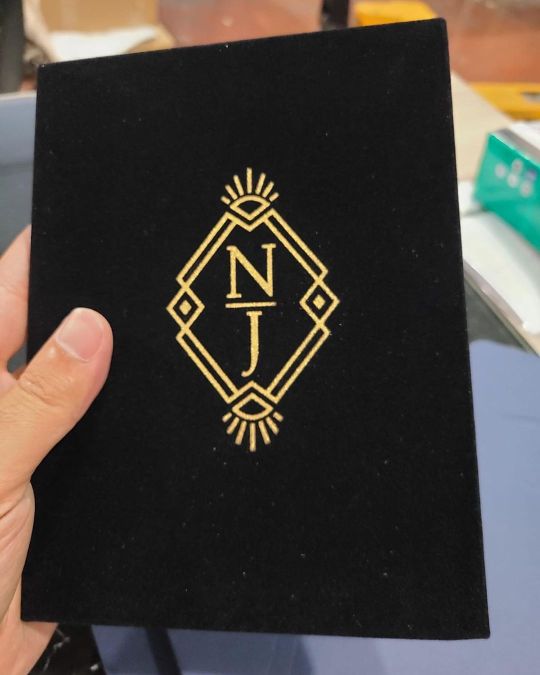
You have a vision for your event, and we have the tools to bring it to life! @mylovelystoreny offers a range of customizable invitations, from traditional paper to stunning acrylic and foil-pressed options. Our velvet envelopes and folios provide the perfect finishing touch, and our commitment to quality ensures that your invitations will be cherished for years to come. Let's work together to make your vision a reality! 🎉 #mylovelystore #custominvitations #acrylicinvitations #foilpressedinvitations #velvetenvelopes #folios #bringyourvisiontolife https://www.instagram.com/p/CpiMdSCr2Vh/?igshid=NGJjMDIxMWI=
#mylovelystore#custominvitations#acrylicinvitations#foilpressedinvitations#velvetenvelopes#folios#bringyourvisiontolife
0 notes
Text
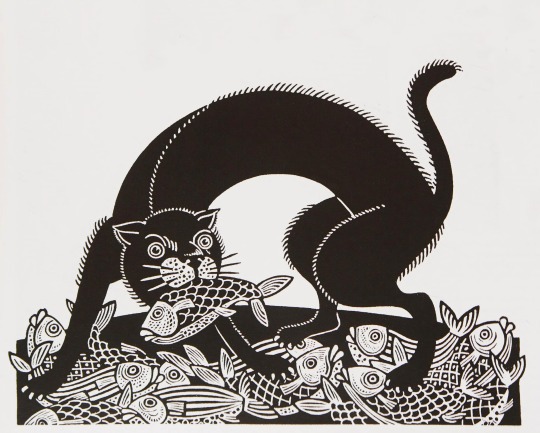
Linda Farquharson, 'Demon Cat', ''Irish Fairy and Folk Tales'' compiled by W. B. Yeats, Folio Society 2007
#Linda Farquharson#scottish artists#linocuts#demon cat#Irish Fairy and Folk Tales#folio society#cats#fairy tales#w. b. yeats
2K notes
·
View notes
Photo

Gorgeous Handmade Journal Folio from JOTJournalsCreations on Etsy https://www.etsy.com/uk/listing/1236239513/vintage-ladies-foliojournal-journals?click_key=f9cee529e577a07be5d6ae0f137b991c0e9caaec%3A1236239513&click_sum=3f95d88f&ref=shop_home_active_20&frs=1#etsychristmas #etsychristmasgifts #etsychristmasgift #etsyusa #etsyusashop #etsyusaseller #etsyuk #etsyukseller #etsyukshop #etsychristmas #etsychristmasgifts #etsyjournaling #etsyjournals #etsy #journals #folios #vintagejournals #vintagejournalstyle #etsyvintage #etsyvintageshop #journalsofinstagram https://www.instagram.com/p/CmCsy6ws3Jb/?igshid=NGJjMDIxMWI=
#etsychristmas#etsychristmasgifts#etsychristmasgift#etsyusa#etsyusashop#etsyusaseller#etsyuk#etsyukseller#etsyukshop#etsyjournaling#etsyjournals#etsy#journals#folios#vintagejournals#vintagejournalstyle#etsyvintage#etsyvintageshop#journalsofinstagram
0 notes
Text
FUCKING LOOK AT ME
yes sir 🫡
558 notes
·
View notes
Text
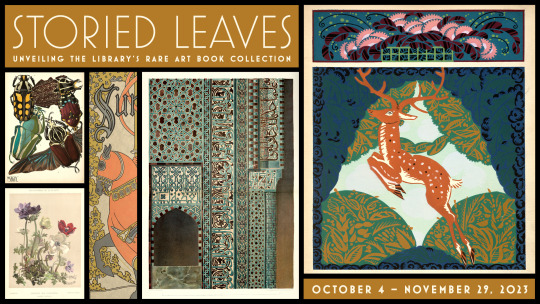




RARE BOOK EXHIBIT NOW ON VIEW
Storied Leaves: Unveiling the Library's Rare Art Book Collection
Visit Minneapolis Central Library to see Storied Leaves: Unveiling the Library’s Rare Art Book Collection! The exhibit, located in Cargill Gallery, features over 80 titles from our rare art folio collection and includes some really stunning prints of art from all over the world! There’s also some library/collection history, explanations of printing techniques, and more. The exhibit runs October 4 – November 29, 2023.
Travel through time and across the globe as you explore the library's rare Art Book Collection. This vibrant exhibit showcases art from six continents—Asia, Africa, North America, South America, Europe, and Oceania—spanning ancient to contemporary times. Produced between 1850 and 1950, the works in this exhibit are leaves from folios, or individual pages contained within portfolios. Most have been carefully hand-printed, stenciled or hand-colored. Delve into the stories of these unique prints to learn how this remarkable collection came to be at Minneapolis Central Library, gain insights into the art and craft of printing, and be inspired to connect with art at your library. This exhibit is funded with money from Minnesota’s Arts and Cultural Heritage Fund.
#Minneapolis#Libraries#rare books#pochoir#book printing#art books#book exhibits#folios#art exhibits#patterns#prints
64 notes
·
View notes
Text




655 notes
·
View notes
Text
Do you just randomly catch yourself looking at pictures or band members and giggling like a schoolgirl
#dave mustaine#noah sebastian#bad omens#jolly karlsson#black veil brides#bmth#oli skyes#andy black#andy biersack#ronnie radke#falling in reverse#ville valo#him#gerard way#mcr#my chemical romance#bvb#megadeth#ryan ross#nick folio#nick ruffilo#emerson barrett#palaye royale#remington leith
586 notes
·
View notes
Text


Bad Omens — Just Pretend.
#core#core bands#metalcore#heavy metal#Metal#Bad omens#noah sebastian#nick folio#nicholas ruffilo#joakim karlsson#death of peace of mind#Just Pretend#Lyrics#Music lyrics#Emo lyrics#emo scene#punk lyrics
879 notes
·
View notes